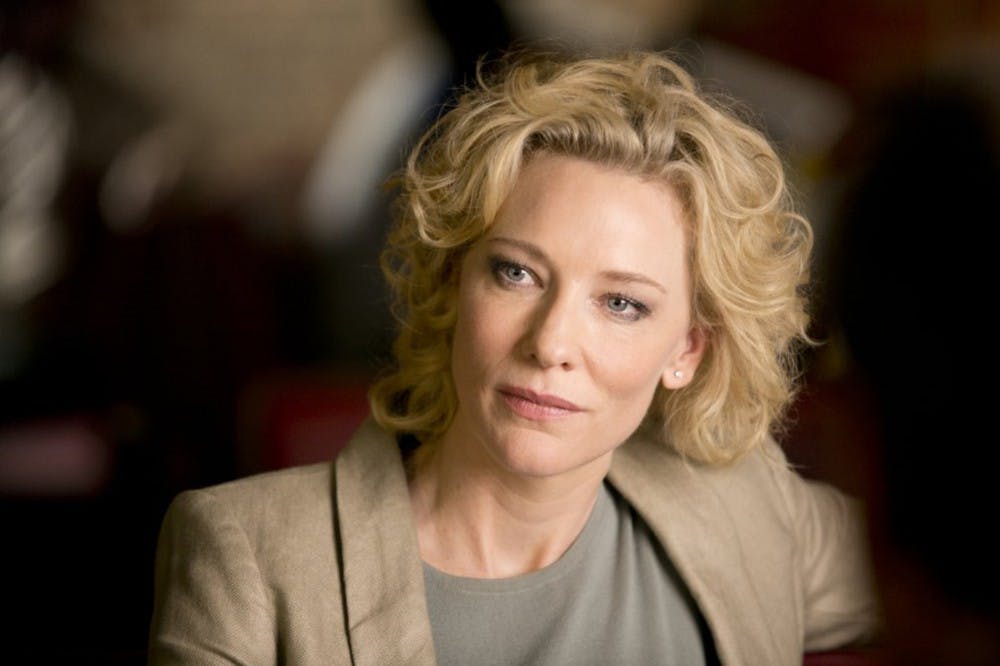Though last year’s lack of decent female roles made for a boring Best Actress race, this year’s Oscars are overflowing with incredible female performances. It’s a battle of Old vs. New, with veterans like Kate Winslet, Cate Blanchett and Jennifer Lawrence squaring off against newbies Alicia Vikander, Rooney Mara and Brie Larson.
Doesn’t that sound exciting? If only that were actually how this year’s race would play out. Unfortunately, Hollywood has proven once again its inability to give actresses their due, and has pushed Winslet, Vikander and Mara into the Supporting Actress category.
At face value, it seems like the studios are trying to secure their leading ladies a better chance of winning. It’s true; current frontrunners Mara and Vikander would have had a hard time competing with the powerhouses of Blanchett and Lawrence. Even Larson, who is making waves with her emotional performance in A24’s “Room,” might have caused one or both to miss a nomination, let alone a win.
However, that’s not the point. This is a pattern of category fraud that we’ve seen repeated again and again, always with women. In 2001, Marcia Gay Harden took home the supporting actress statue for her role in “Pollack.” Despite sharing equal screentime and plot value with her costar, Ed Harris, she was dropped to the supporting category due to lack of name recognition.
The same thing had happened decades earlier in 1983, when Jessica Lange won for her role in “Tootsie.”
We see it again and again — Eva Marie Saint in 1955, Goldie Hawn in 1969, Meryl Streep in 1979, Tatum O’Neal in 1974, Jennifer Connelly in 2002 and countless others, all clearly had leading roles, all were pushed to the supporting category. Even Jennifer Hudson for “Dreamgirls” — in what world is hers anything but the lead role? In Hollywood, that’s where.
In this year’s “The Danish Girl,” Vikander shares equal screentime and narrative importance with co-lead Eddie Redmayne. Even the title, “The Danish girl” refers to her character, Gerda Wegener, as many seem to assume. It’s the role of the doting wife that always seems to be denied a lead actress spot. This pattern of category fraud wouldn’t bother me so much if it happened as much in the lead actor race as it does with the actresses. Can you imagine Redmayne campaigning as a supporting actor for “The Danish Girl,” just because they thought he’d have a better chance of winning? Of course not. Therefore, he’ll likely lose to current frontrunner Michael Fassbender for Steve Jobs, but at least he’ll lose in the proper category. Now that I think about it, maybe if Leonardo DiCaprio ran as a Supporting Actor for “The Revenant,” he’d finally win for once. But no, they wouldn’t dare belittle his hard work by denying him a lead actor nomination.
It certainly has happened: Actors like Benicio Del Toro and Javier Bardem arguably had leading roles and ended up winning in the Supporting Actor category. But it doesn’t happen nearly as often as it does with the women.
You could argue that this is a good problem to have — this year, we have so many actresses in great roles that there aren’t enough spots for them all. In an industry that historically has lacked decent roles for women, I should be happy that we’ve at least gotten this far.
I’m not.
In my mind, there’s a simple solution: expand the number of nominations. We did it for the Best Picture race — anywhere from five to 10 eligible films can be nominated. So why not the acting categories? Studios would still probably place their actresses in the categories in which they have the best chance of winning, but more nomination spots would be a good start.
I know, I know: the vast majority of these movies have only been seen by critics and premiere audiences. However, awards season is my favorite time of year, so we can never start too early.
Kate Halliwell




